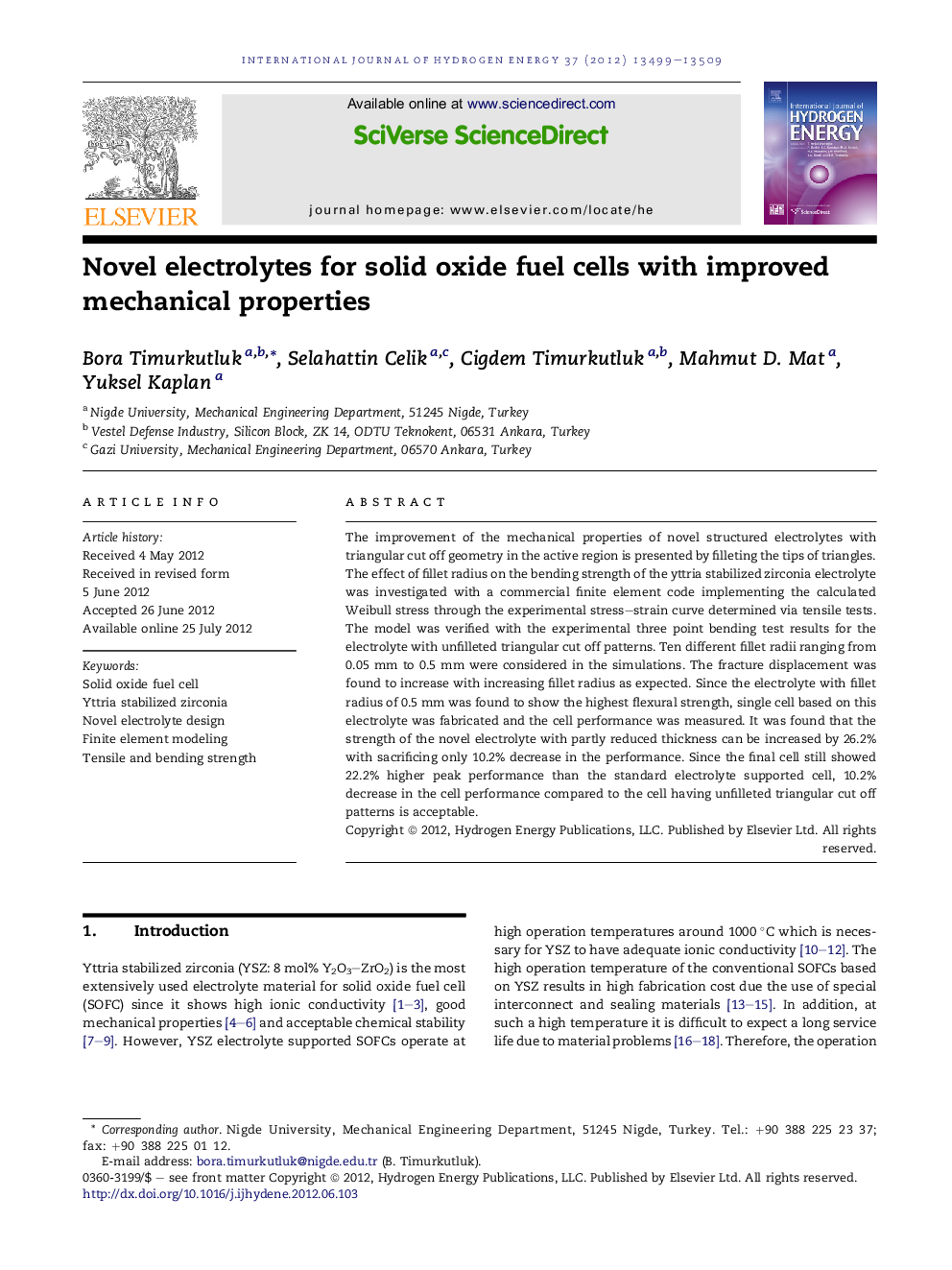| Article ID | Journal | Published Year | Pages | File Type |
|---|---|---|---|---|
| 1282247 | International Journal of Hydrogen Energy | 2012 | 11 Pages |
The improvement of the mechanical properties of novel structured electrolytes with triangular cut off geometry in the active region is presented by filleting the tips of triangles. The effect of fillet radius on the bending strength of the yttria stabilized zirconia electrolyte was investigated with a commercial finite element code implementing the calculated Weibull stress through the experimental stress–strain curve determined via tensile tests. The model was verified with the experimental three point bending test results for the electrolyte with unfilleted triangular cut off patterns. Ten different fillet radii ranging from 0.05 mm to 0.5 mm were considered in the simulations. The fracture displacement was found to increase with increasing fillet radius as expected. Since the electrolyte with fillet radius of 0.5 mm was found to show the highest flexural strength, single cell based on this electrolyte was fabricated and the cell performance was measured. It was found that the strength of the novel electrolyte with partly reduced thickness can be increased by 26.2% with sacrificing only 10.2% decrease in the performance. Since the final cell still showed 22.2% higher peak performance than the standard electrolyte supported cell, 10.2% decrease in the cell performance compared to the cell having unfilleted triangular cut off patterns is acceptable.
► Novel designed SOFC electrolytes based on YSZ. ► 30% thin electrolyte in the active region is achieved. ► 26.2% improvement in mechanical strength is achieved by filleting tips. ► Final cell showed 22.2% higher performance than the cell with standard electrolyte.
